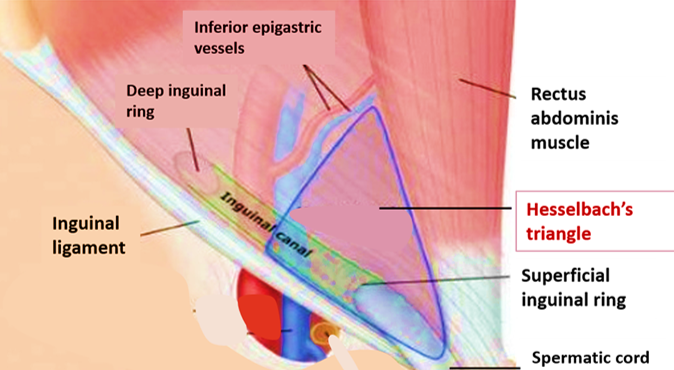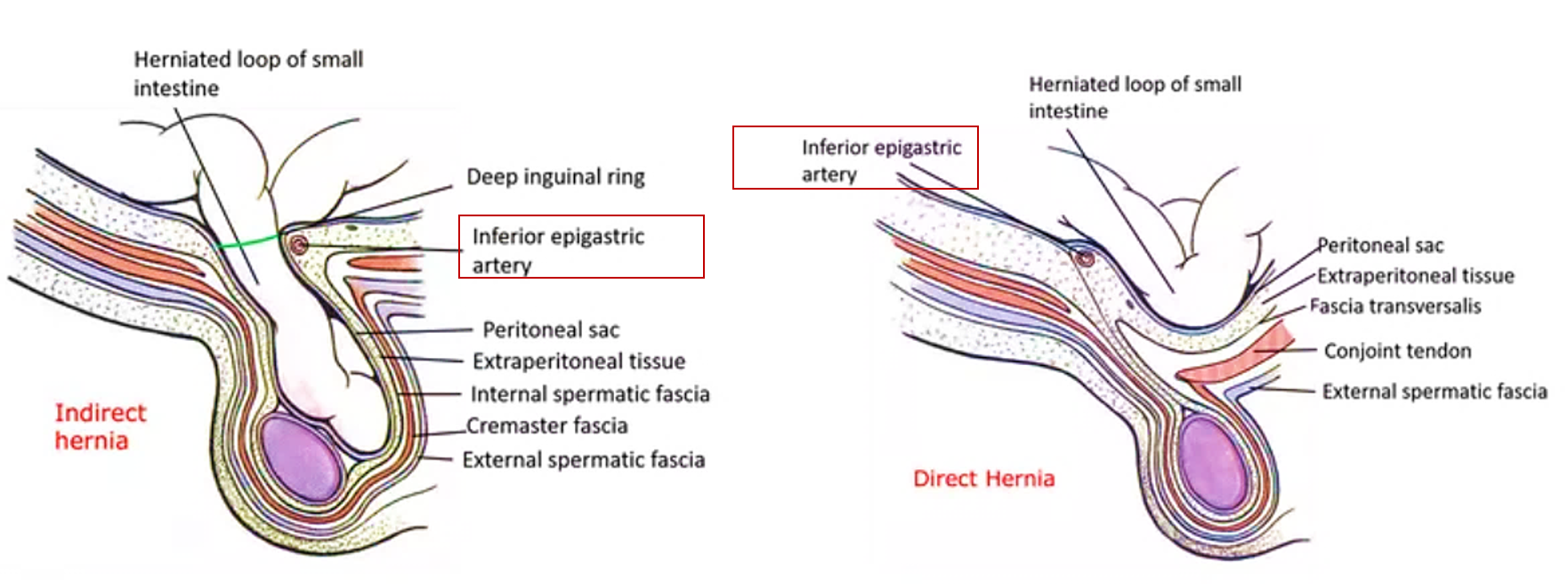Advertisements
What are the different types of inguinal hernias?
Inguinal hernia is a protrusion of loop of small intestine into the inguinal canal is termed as inguinal hernia. It presents as a swelling above and medial to pubic tubercle, above the inguinal ligament. There are just two types of inguinal hernias, direct and indirect.
Indirect inguinal hernia / Oblique inguinal hernia
- The herniated loops of small intestine pass through the deep inguinal ring into the inguinal canal, it may emerge through the superficial inguinal ring and descend into the scrotum.
- When the hernia reaches the scrotal sac it is complete and when it remains in the canal and does not pass through the superficial inguinal ring it is said to be incomplete .
- This type of hernia is more common than the direct inguinal hernia.
- It can be congenital (due to patent processus vaginalis) or acquired (due to increased intraabdominal pressure as during weight lifting.
- The neck of the hernia sac lies lateral to the inferior epigastric artery.
Direct inguinal hernia
- It pushes its way into the inguinal canal directly forwards through the posterior wall of the inguinal canal through the Hesselbach’s triangle (see below).
- The neck of the hernia sac lies medial to the inferior epigastric artery.
What are the boundaries of Hesselbach’s triangle?
It is located above the medial half of the inguinal ligament. Its boundaries are:
- Base is formed by the inguinal ligament.
- Laterally it is bounded by inferior epigastric artery.
- Medially it is bounded by lateral border of rectus abdominis.
- Apex is formed where the inferior epigastric artery meets the lateral border of rectus abdominis.
- Floor is formed by conjoint tendon and fascia transversalis.

Enumerate the differences between direct and indirect inguinal hernias.
| Indirect inguinal hernia | Direct inguinal hernia |
|---|---|
| Viscus enters the inguinal canal through deep inguinal ring | Viscus enters the canal by pushing forward the posterior wall of the inguinal canal through Hesselbach’s triangle |
| Neck of the hernia sac is narrow | Neck of the hernial sac is wide |
| Neck of the hernial sac lies lateral to the inferior epigastric artery | Neck of the hernial sac lies medial to the inferior epigastric artery |
| Occurs in young people | Occurs in old age |
| Usually Congenital – occurs due to persistent processes vaginalis | usually Acquired- occurs due to weakness of muscles forming posterior wall of inguinal canal |

What are the coverings of direct and indirect inguinal hernias?
| Coverings of Indirect inguinal hernia | Coverings of Direct inguinal hernia |
|---|---|
| Skin | Skin |
| Superficial fascia | Superficial fascia |
| External spermatic fascia derived from external oblique aponeurosis | External spermatic fascia |
| Cremaster muscle and fascia from internal oblique | Cremaster muscle and fascia (in lateral direct hernia) / conjoint tendon (in medial direct hernia) |
| Internal spermatic fascia from fascia transversalis | Extraperitoneal tissue |
| Extraperitoneal tissue |

Really love your notes..
But there’s a small problem with some links to certain questions.
For eg: when I click on inguinal canal ( in the important question section) it directs me to anal canal.
I have become a very big fan of your notes especially the easy to draw diagrams in each question. I hope you could rectify the issue that I mentioned above.
Thank you so much